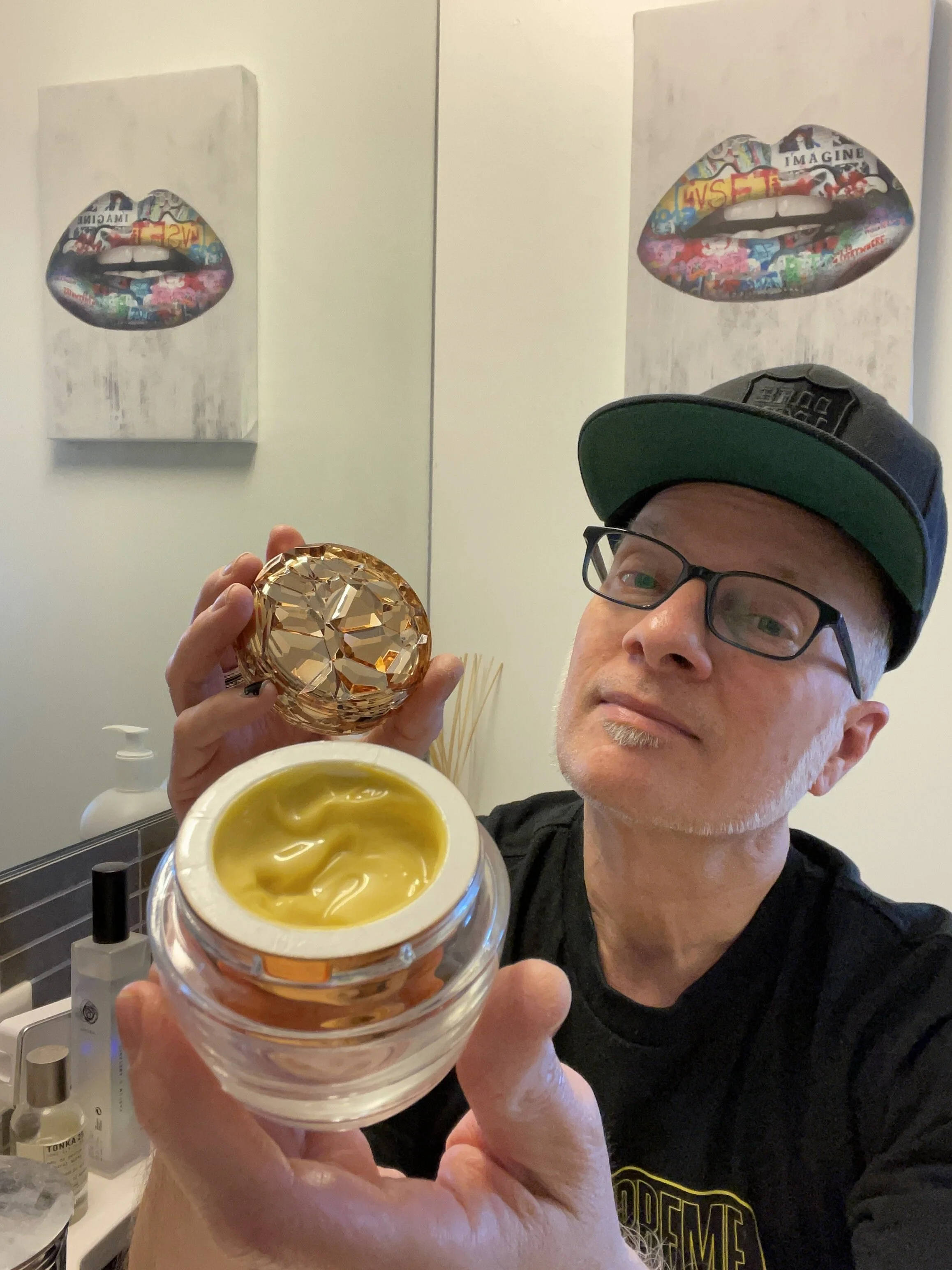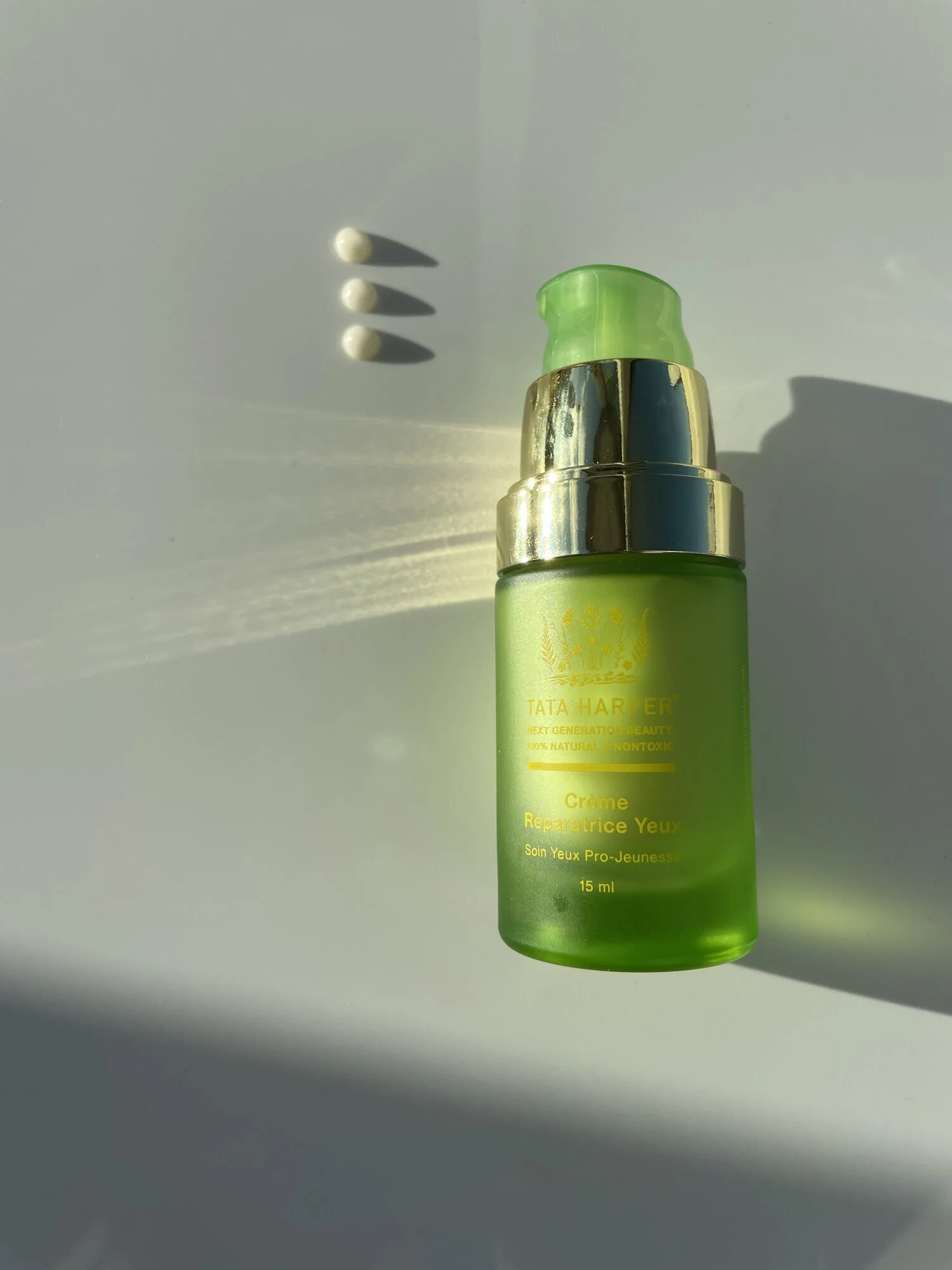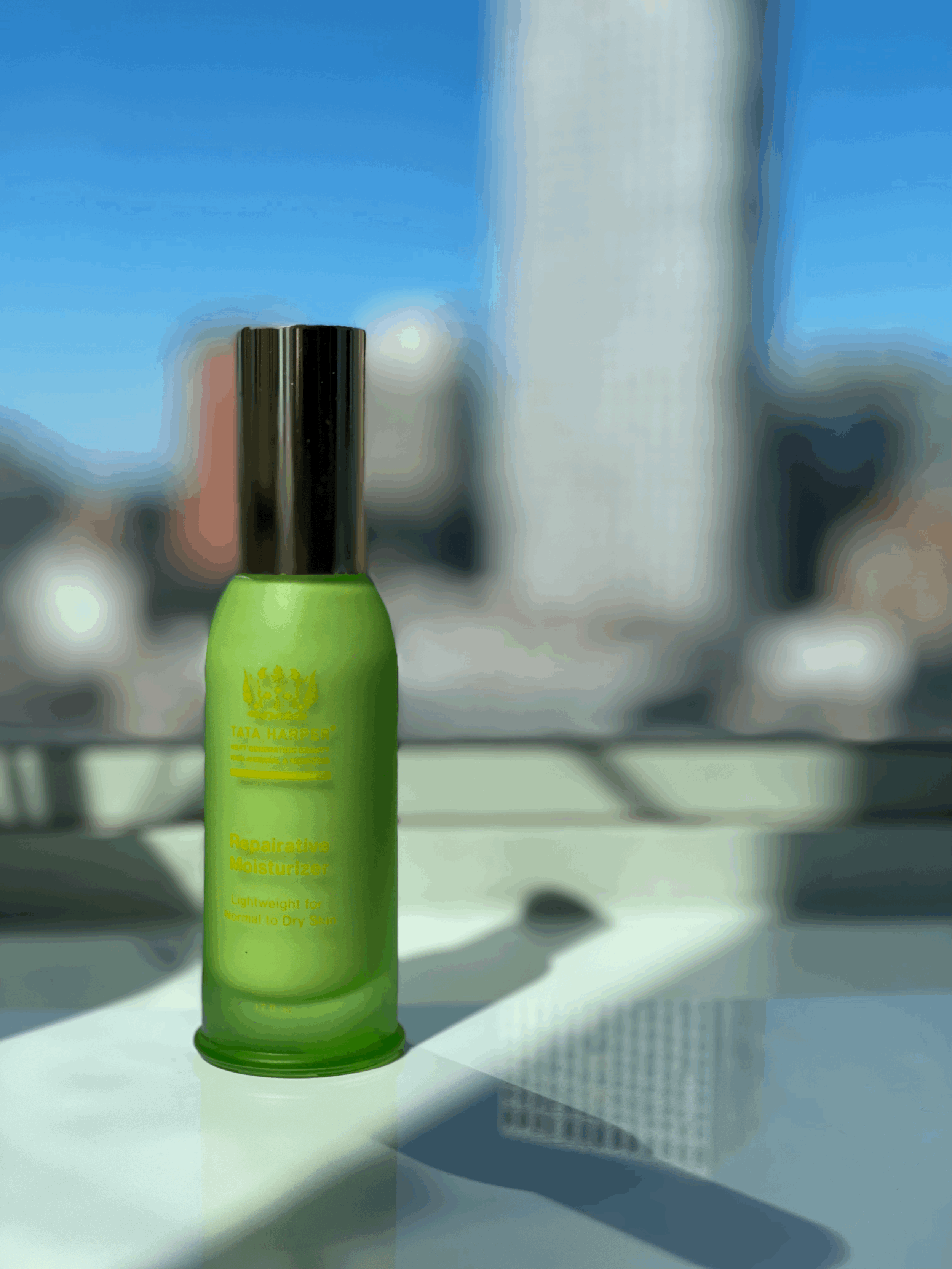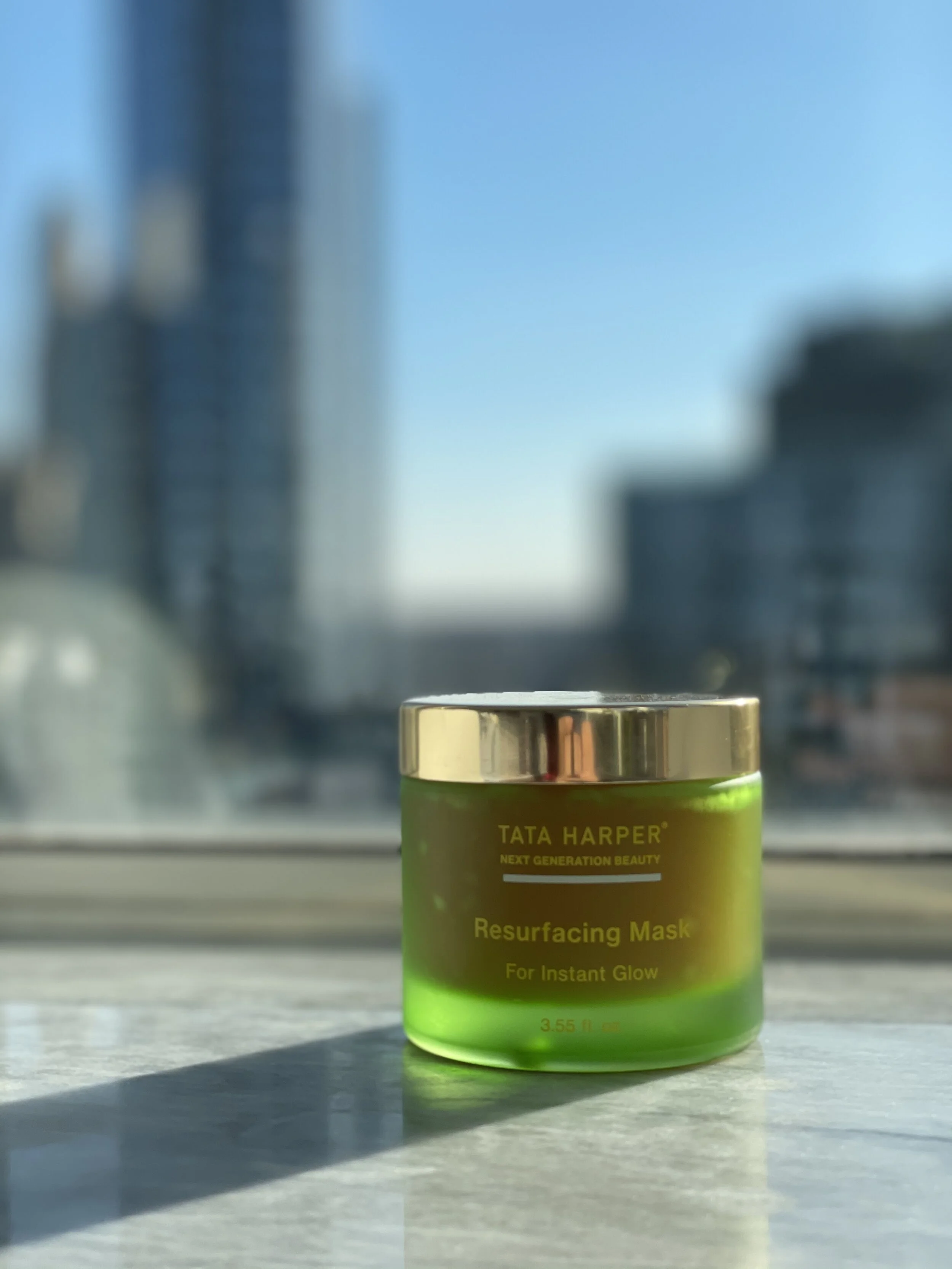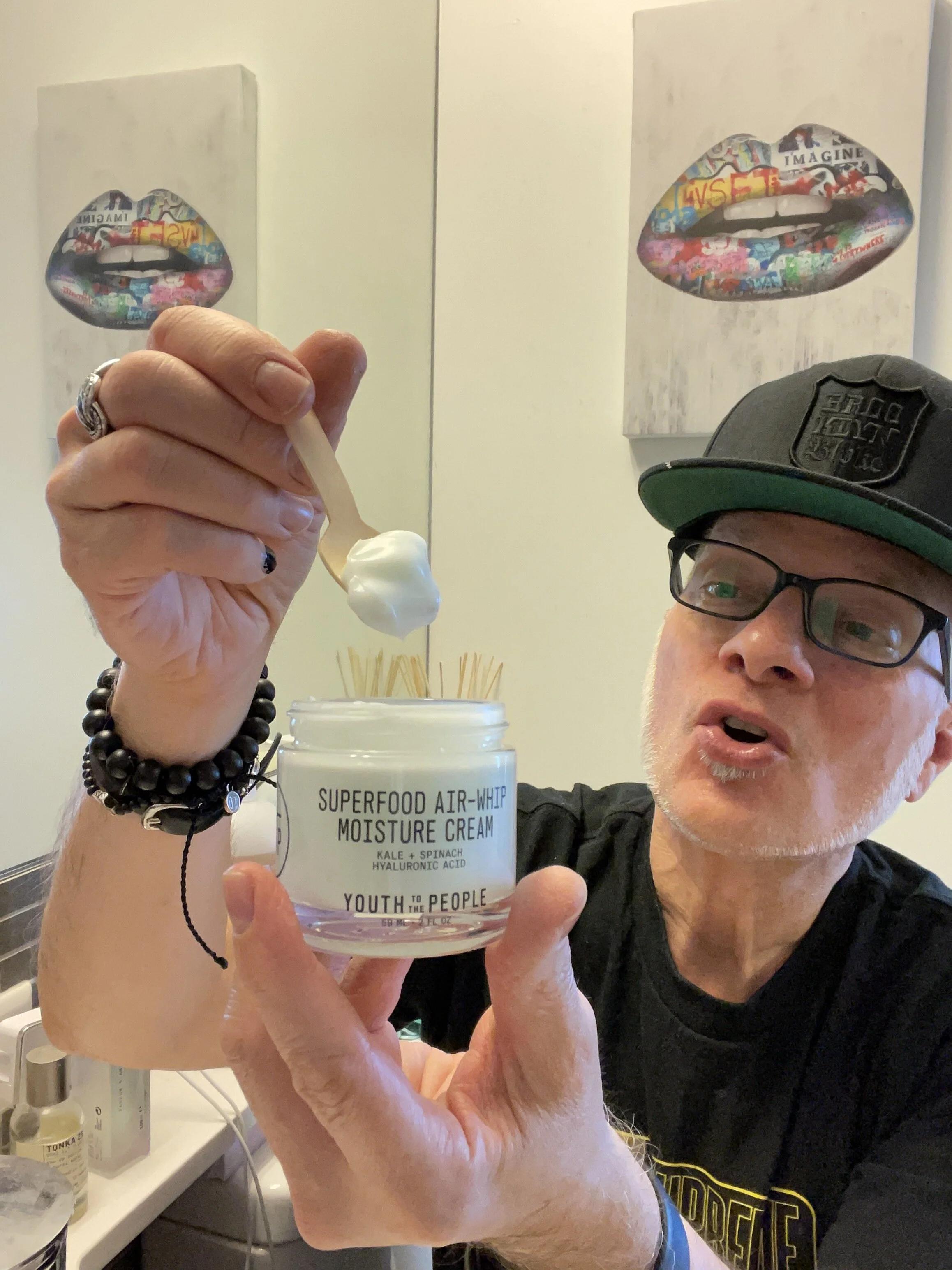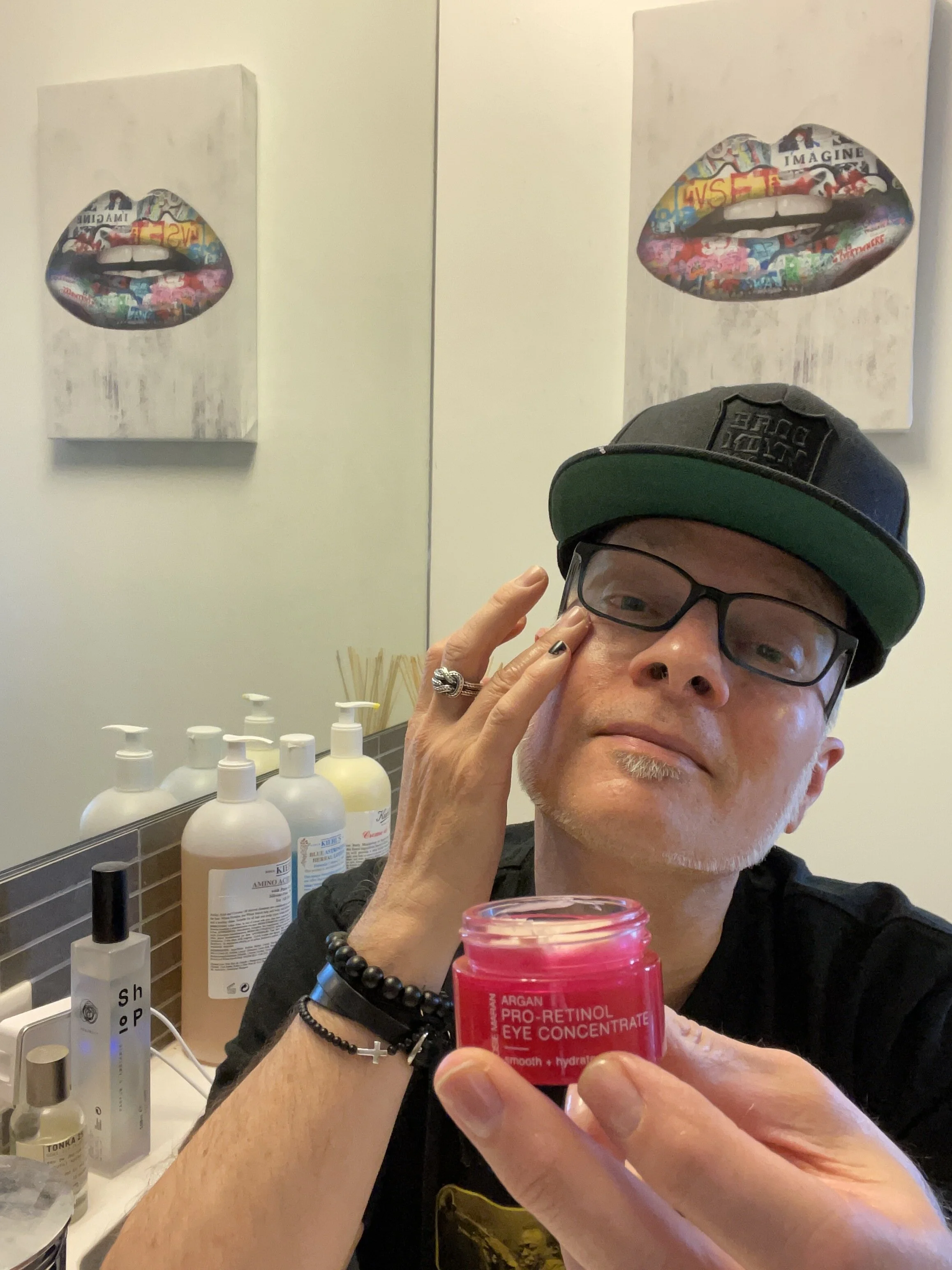PART 2: THREE SUPER LIGHT MOISTURIZERS (AND AN EYE CREAM!) FOR SPRING THAT I'M SUPER INTO - BEST ORGANIC FACE CREAM, BEST MOISTURIZERS FOR OILY SKIN
I think I’m having a post-Covid mid-life crisis.
Okay, let’s not sound so dramatic. Make it a post-Covid awakening — a renaissance, a rebirth. Like many of us, I’ve been doing a lot of reflecting.
Back in my freshman year in college during that first summer break, I ventured home to rejoin my family and childhood friends after nearly a year away.
I had begun to see the world outside, having taken the high school trip to Europe — the very first time I was away from my family. And, after a full year away at school, I felt truly free for the first time in my life — liberated from the constraints of my childhood. Free to be me, the fully self-expressed version of me. I’ve never been anything but since.
I got home to Connecticut and one of the first things I did (unbeknownst to my parents!) was smoke a joint with my college roommate, who coincidentally lived a couple of towns over. I’d been so sheltered, I had no experience with marijuana to that point. The two of us had no idea how to inhale and didn’t get even remotely high from it.
And, as a grand gesture — a declaration of independence — I also got my ear pierced.
My oldest friend in the world, Susan, did it herself in her parent’s kitchen. A fellow Star Trek fan, Susan lived down the street from us. We’d met when we were five and I used to escape to her house when I needed to get away — which was almost daily!
As if it were no big deal, she iced my ear, put a carrot behind it, and rammed a thick sewing needle through the lobe. I can still feel it!
I wore an earring, usually a cross, the entire time I was in college. Then, out in Los Angeles, where I moved right after college, I got the other ear done. I have no recollection of that piercing so it must have been more professional, and less traumatic. Both of my ears were pierced until I moved to NYC. For some reason, I stopped wearing earrings shortly after and the holes all but closed up.
This week, I’m starting anew.
I have an appointment Wednesday at New York Adorned, the iconic East Village tattoo shop where I got the Buddha tattoo on my right arm. I’ve been longing for two flat black posts for some time now — and have gotten then in advance of the piercing. It’s my way of saying I’m free, I’m back and I’m doing whatever I want that makes me feel like myself again.
Just as all those years ago, my long confinement is over…
The skincare stuff starts here.
As the pandemic has waned here in NYC, spring truly seems like a reawakening. Everything feels fresh, new, liberating. Just like spring in NYC should feel. And, as in years past, spring means new skin care! There are suddenly exciting, lighter textures; new, innovative face creams; and game-changing serums that light up a dull, winter-worn complexion.
Two weeks ago, I published the first part in my two-part series on lightweight moisturizers for spring. I had traditionally reviewed what I consider the best face creams for oily skin and all skin types in the warmer months during the early summer. (Psst…you can catch part one here.)
PART 1: THREE SUPER LIGHT MOISTURIZERS (AND AN EYE CREAM!) FOR SPRING THAT I'M SUPER INTO
That initial piece featured some of my favorite new face cream discoveries of the last few months, including the Paula’s Choice Water-Infusing Electrolyte Moisturizer, The Inkey List’s Symbright Moisturizer and the Sobel Skin Rx Bio Hyaluronic Moisture Cream Extreme. I also included in my recommendations one of my favorite anti-aging eye creams right now, the vitamin- and peptide-powered SELF/ish Eye Cream.
Over the past week, the temps have literally hit 80 degrees. So, the spring switch-up couldn’t be more timely. I’ve got tons of new product discoveries coming in the weeks ahead including a few super cool probiotic skincare products.
But for now let’s take a look at the next selections in my lightweight moisturizer series…
KORA Organics | Turmeric Glow Moisturizer
I love anything with turmeric in it. The Inkey List’s Turmeric Cream is one of my favorite moisturizers ever — and one of the best brightening face creams. That’s what turmeric does in skincare: it brightens the skin. It’s also a fantastic antioxidant.
But at higher concentrations it does smell, something that can turn off a lot of people. It’s ugly sexy. Like a lot of sneakers and male actors.
PRODUCT REVIEW: THE INKEY LIST TURMERIC CREAM – ONE OF THE BEST ANTIOXIDANT MOISTURIZERS
The new KORA Organics Turmeric Glow Moisturizer is of course powered by turmeric, but not so much turmeric that it’s off-putting. While The Inkey List Turmeric Cream reeks of it, the KORA Organics option is more tolerable.
The brand’s Turmeric Glow Moisturizer is a treasure trove of natural ingredients, many of which are derived from organic farming or designated by the brand as “made using organic ingredients”.
To start, at ingredient number one is organic Aloe Barbadensis (Aloe Vera) Leaf Juice. I love when a brand’s chemists are wise enough to replace useless water with aloe vera or a fermented extract. These are nourishing for the skin and, in the case of aloe, have a humectant benefit and even some antioxidant activity on the skin. Water delivers nothing more than a temporary humectant benefit and wastes precious resources. Bravo to KORA Organics for that!
There are numerous emollients in the form of non-fragrant plant oils in the Turmeric Glow Moisturizer including organic Avocado Oil, organic Rosehip Seed Oil and organic Balanites Roxburghii Seed Oil — all in the top ten. I’d never heard of the latter. It’s perhaps better known as Desert Date Oil; though not better known to me.
There are also several skin brightening actives in KORA Organics’ Turmeric Glow Moisturizer. Among them Turmeric Root Extract, Licorice Root Extract, and Ascorbyl Glucoside — a stable, water-soluble form of Vitamin C.
According to the experts on the Paula’s Choice Research Team:
Ascorbyl glucoside is a stable form of vitamin C combined with glucose. When properly formulated and absorbed into skin, it breaks down to ascorbic acid (pure vitamin C). It functions as an antioxidant and works well with other replenishing and antioxidant ingredients to preserve key substances skin needs to look smoother, brighter, and younger.
Research on ascorbyl glucoside’s ability to improve uneven skin tone or spots isn’t too exciting, at least compared with more studied types of vitamin C; however ascorbyl glucoside plus the B vitamin niacinamide is a viable combination to consider, and several skincare products pair these ingredients.
Ascorbyl glucoside is a good form of vitamin C to consider, though as with any ingredient, skin will reap greater benefits from a mix of great ingredients rather than focusing on just one, hoping it does it all.
What Are the Benefits of Turmeric for Skin?
Of course the star active in the formula is organic Curcuma Longa (Turmeric) Root Extract — one of the most potent antioxidants used in skin care. What is turmeric and what makes it so valuable for the skin? Of course, I found all the insights I needed from the experts on the Paula’s Choice Research Team.
Turmeric is a spice made from the dried, ground root of the Curcuma longa plant. It contains curcumin, a lipophilic, polyphenolic antioxidant pigment that gives turmeric its golden-yellow color.
In addition to being a food seasoning, turmeric has numerous health benefits whether consumed orally vis foods and supplements or applied topically. Ongoing research has shown turmeric and the curcumin it contains play a safe and compelling role in promoting healthier, normalized skin.
On skin, in vivo research has shown that turmeric and its derivatives interrupt signaling in surface cells that trigger signs of irritation. Turmeric helps calm skin and may even play a role in reducing the look of acne-related redness by modulating pathways to restore a healthier, more even appearance.
Research has conclusively shown that turmeric is a potent antioxidant, largely due to its curcumin content (although turmeric also contains other antioxidants). Applying turmeric to skin can help offset signs of environmental damage and, to some extent, thwart the skin-damaging effects from UVB light.
As with many antioxidants, turmeric requires protection from air and light, as routine exposure causes it to break down and limits its availability to skin.
Beyond being an antioxidant, some research has shown the curcumin portion of turmeric boosts skin’s hyaluronic acid content, meaning turmeric can also be considered hydrating.
With its deep yellow hue and brightening oomph, the KORA Organics Turmeric Glow Moisturizer is a brilliant formula — literally and figuratively. But what makes it so special, and sets it apart from just about everything else in the marketplace, is the refill pod component. It’s also super cool!
How exactly does it work?
Well, you start by purchasing your first KORA Organics Turmeric Glow Moisturizer for $58. That includes the kinda elegant, super durable plastic pot and a single refill pod. The jar’s lid is a bit too blingy for me, but it’s all good.
Then, when you’re running low on your face cream, you just need to purchase a new pod at $46 — a savings of $12.
Of course the whole thing only works if you love it enough to replace it. (And if you’re really, really into the gaudy lid!)
I gotta say, I think you may just love Turmeric Glow Moisturizer enough to keep using it again and again. It’s a perfectly well formulated antioxidant, emollient, and brightening face cream made with all-natural ingredients, many of which are organic or fermented actives.
Turmeric Glow Moisturizer has a soft, velvety texture that’s ideal for all skin types except oily and blemish prone. (There’s an option for you guys below!)
SHOP THE BLOG: Purchase the KORA Organics Turmeric Glow Moisturizer for $58 here.
PRODUCT REVIEW: ORGANIC THE NEW BEAUTY CLEAR 1% CENTELLA CREAM SERUM – BEST ORGANIC MOISTURIZER
WATCH MY VIDEO REVIEW
THE YEAR’S BEST VITAMIN C SERUMS WITH PAULA'S CHOICE, SUNDAY RILEY, THE INKEY LIST AND MORE!
ON MY YOUTUBE CHANNEL HERE
Tata Harper | Repairative Anti-Aging Moisturizer
I’m a super fan of Tata Harper’s clean green beauty. In fact, one of my favorite eye creams is the Tata Harper Restorative Anti-Aging Eye Cream. It’s a light, silky sensation for the eye area described by Tata and team as a “multi-correctional formula [that] targets visible signs of aging with 15 sources of plumping hydration, 10 sources to minimize the look of wrinkles, and 5 sources to depuff.”
There’s just something about Tata Harper’s 66% organic formula that I love. (Psst…you can catch my review of it here.)
PRODUCT REVIEW: TATA HARPER RESTORATIVE ANTI-AGING EYE CREAM – BEST NATURAL EYE CREAM, BEST ORGANIC EYE CREAM
I’m also a fan of Tata Harper’s Resurfacing BHA Glow Mask — a 100% natural gel mask and one of the best exfoliating masks with BHA (in the form of Willow Bark Extract). If you didn’t catch me using the mask on #selfcaresunday, be sure to catch it on my IGTV channel to see me put this green, natural clay mask into action.
So, I was excited to experience the Tata Harper Repairative Anti-Aging Moisturizer. Like all of the brand’s products, it’s 100% natural with many of its actives derived from organic farming. In fact, the brand claims that “68% of the total ingredients are from organic farming.”
By my count, there are about a dozen organic ingredients in this velvety, lightweight natural face cream, among them Aloe Barbadensis Leaf Juice, Safflower Oleosomes, Olive Oil, and Jojoba Seed Oil — all of which are in the top ten and thus at legit concentrations.
Tata Harper also claims that the formula is infused with what’s termed an Estate Grown Beauty Complex, a nutrient- and antioxidant-rich blend of botanicals grown on the company farm in the great outdoors of Vermont — just a few hours’ drive north of my hometown in Connecticut!
Which brings me to the smell of the Repairative Anti-Aging Moisturizer. It’s just so fresh and clean with the scent of nature. Interestingly, and quite funny, according to the brand it “smells like green beauty. This 100 percent natural formula smells like the roots, stems, and absolute essence of every single natural ingredient in the green bottle.”
I love that! I really do.
What Is Green Beauty?
You may be wondering what “green beauty” actually means. You’re not alone; I was too! After reading up on it, I think it’s best described as the intersection of clean, natural and eco-conscious. Green beauty is as good for the earth as it is for your skin!
I found an insightful piece on Allure titled, What “Green” Means to Women in the Natural Beauty Industry that got really profound but it kind of struck the right tone for me.
An excerpt from the article:
“Clean.” “Green.” “Natural.”
For planet-conscious beauty consumers, these words can have a strong gravitational pull. But dear global citizens: The secret to saving our reefs and oceans, our forests and trees, is to do so with actions, not words. It all starts with your routine. Some actions can be small (don’t buy a new moisturizer until you’ve depleted the one you have). Some are big (seek out biodegradable or recyclable packages, or skip plastic packaging entirely). And some actions, of course, don’t rest with you, but with beauty companies. (Screaming into the void: Will anyone ever develop a truly earth-friendly mascara? Read on for intel.)
Ultimately, words like clean, green, and natural often have little to do with the buzzword we should really be focused on: “sustainable.” It’s the umbrella term for products that protect the planet’s resources, and the idea can seem, rather ironically, unsustainable. That’s precisely why we went straight to the women who are making a concerted effort, every day, in their own ways, to reduce their impact on the earth. They’re environmentalists, business owners, makeup artists — and they’re all unapologetic beauty enthusiasts.
You can read the interviews here. They’re kind of cool!
In terms of Tata Harper’s Repairative Anti-Aging Moisturizer, it’s a nice, guilt-free face cream for dry skin. But what about the “anti-aging” phrase in the name? As I’ve shared multiple times, I think the term anti-aging is little more than marketing speak. Not only are sunscreens the best anti-aging products, but I’d go out on a limb and say they’re the only anti-aging products. Retinoids like Retinol may be the only exception.
With its cocktail of antioxidant botanicals, replenishing non-fragrant plant oils, and soothing extracts, the Repairative Anti-Aging Moisturizer is a damn good moisturizer for dry skin. I don’t think it needs to be spun as anything else.
SHOP THE BLOG: Purchase the Tata Harper Repairative Anti-Aging Moisturizer for $116 here.
PRODUCT REVIEW: TATA HARPER RESURFACING BHA MASK – BEST EXFOLIATING MASK, BEST NATURAL FACE MASK
WATCH MY VIDEO REVIEW
POWERING UP THE ZIIP NANOCURRENT DEVICE FOR SELFCARE SUNDAY
ON MY YOUTUBE CHANNEL HERE
Youth To The People | Superfood Air-Whip Moisturizer with Hyaluronic Acid
This product from LA-based YTTP has been on the market a while, but I’ve never had the chance to experience or review it until now. The Youth To The People Superfood Air-Whip Moisturizer with Hyaluronic Acid is my pick of the spring face cream collection for oilier skin types.
Unlike the KORA Organics Turmeric Glow Moisturizer and Tata Harper’s Repairative Anti-Aging Moisturizer, it has a relatively conservative oil content with but a single plant oil, Sunflower Seed Oil, at ingredient number two. The Superfood Air-Whip Moisturizer is more about hydration than it is about moisture; that is, it treats dehydrated skin, not dry skin. And all skin, no matter its skin type needs hydration in the form of water.
How do you know if your skin is dehydrated? And what’s the difference between dry and dehydrated skin? Simply, dry is a skin type and dehydrated is a skin concern or condition.
What’s the Difference between Dry Skin and Dehydrated Skin?
For the answer to that vexing questing, as I most often do, I turned to the experts on the Paula’s Choice Research Team for insights. There’s a superb piece on the Paula’s Choice site titled, What is Dehydrated Skin & How to Choose the Best Products. Here is an excerpt:
Dehydrated skin often looks and feels like dry skin all over your face, but there's a major difference between the two: dehydrated skin is usually a temporary concern (with various surprising causes) and dry skin typically doesn't change over time. If you have dehydrated skin, your skin may also produce a normal or even excessive amount of oil on its surface.
"Dehydrated skin" is something we’re asked about frequently. It seems there’s a lot of confusion about what this skin concern is about. A major part of the confusion is that the term "dehydrated skin" is often used interchangeably with "dry skin" or "combination skin" but they are not the same! Dehydrated skin can occur in all skin types and is not exclusive to those with dry skin or combination skin.
The Difference Between Dry Skin and Dehydrated Skin
Having classically dry skin is easy to recognize. Dry skin frequently feels tight and dry, with no oil anywhere to be seen. This situation rarely fluctuates; skin feels dry all year long. The dryness might get worse depending on the climate, season, or activity, but regardless of those things, without great skin care products, the uncomfortable dry, tight feeling will persist.
As mentioned above, dehydrated skin can look and feel similar, but there’s a major difference: Dehydrated skin tends to come and go, it does not persist.
As the name implies, the Youth To The People Superfood Air-Whip Moisturizer is, well, light as air. Actually, that’s a bit of an exaggeration. It’s light AF though.
So let me take free license as a copywriter who specializes in product naming and rephrase it:
The Youth To The People Superfood Light AF Moisturizer is perfect for a hot summer day and ideal for year-round if you’re an oilier skin type. It’s got such a refreshing, fluffy texture and melts right into the skin on application.
Superfood Light AF Moisturizer is infused with a wonderful, natural cocktail of antioxidant plant extracts, including several “superfood” ingredients like Spinach Leaf Extract, Alfalfa Leaf Extract and the brand’s signature Kale Leaf Extract. Don’t quote me but I feel like YTTP puts kale in everything.
And why not?! I had never even heard of kale growing up — and didn’t start incorporating it into my diet until I moved to New York. Now, I love to massage the leaves in olive and salt to soften them for a really nice, rather substantive salad.
As the name also avers, the Youth To The People Superfood Air-Whip Moisturizer with Hyaluronic Acid contains power humectant Hyaluronic Acid in two molecular weights for broader skin hydration.
What Is Hyaluronic Acid and What Does Hyaluronic Acid Do for the Skin?
I love this article on Hyaluronic Acid on the Healthline website titled, Why Science Says Hyaluronic Acid Is the Holy Grail to Wrinkle-Free, Youthful Hydration. It’s wonky and full of insights. Check this part out:
“The benefits of hyaluronic acid on the skin has to do with its molecular weight and concentration. In this case, size matters! The molecular weight refers to its mass, or how big the HA molecule is. This is measured in something called unified atomic mass units — daltons, or kDa for short.
HA between 50 to 1,000 kDa is the most beneficial for skin, with about 130 kDa being the best, according to the most recent human studies. Anything higher won't make too much of a difference. Anything lower might cause inflammation. How did we get this number? When you look at studies, you'll see a pattern, but one of the most thorough studies looked at HA with different molecular weights, including 50, 130, 300, 800, and 2,000 kDa.
After one month, they found that treatment with 130 kDa HA was the most effective, increasing skin elasticity by 20 percent. Both the 50 and 130 kDa groups had significant improvement in wrinkle-depth and skin roughness after 60 days. All the other molecular weights still improved elasticity and skin hydration, just less so. You can read more about this molecular weight analysis from the original breakdown here.”
Interestingly, aside from the natural vitamin content of the kale extract., the brand makes no mention of the additional Tocopherol Acetate (Vitamin E) and Ascorbic Acid, the pure form of antioxidant powerhouse and skin brightening Vitamin C.
Youth To The People’s Superfood Air-Whip Moisturizer is good stuff for skin on a warm day or any time of the year. Kinda like a kale-infused fresh juice!
SHOP THE BLOG: Purchase the Youth To The People Superfood Air-Whip Moisturizer with Hyaluronic Acid for $48 here.
BEST RETINOL FACE CREAMS AND SERUMS
Josie Maran | Argan Pro-Retinol Eye Cream
Two weeks ago, in my kick-off to my SS21 series on lightweight face creams, I recommended one of my favorite eye cream discoveries of 2020. The SELF/ish Eye Cream is a near-perfect eye cream for just about anyone. It’s super affordable at just $22 and powered by a pro-skin health blend of antioxidant botanicals and vitamins — as well as plumping peptides. It’s got a super lightweight texture that melts right into the skin. I can’t get enough of the stuff! If you missed it, I’ve reviewed it on the blog here.
PRODUCT REVIEW: SELF/ISH EYE CREAM - BEST ANTI-AGING EYE CREAM, BEST CLEAN EYE CREAM FREE OF TOXINS
As light and effective as the SELF/ish Eye Cream is, I wasn’t expecting to be wowed by another anti-aging eye cream so soon. (Of course, I use the term anti-aging loosely!) The Josie Maran Argan Pro-Retinol Eye Cream is powered by what the brand terms “pro-Retinol,” which is essentially a Retinol-like derivative of algae: Pink Algae Extract.
Whether the Argan Pro-Retinol Eye Cream performs on par with the gold-standard anti-aging active I have no way to tell. But, Retinol in the eye area is always a tricky proposition.
The thinner skin around the eyes is quite sensitive and I’d venture to guess that most people (even those who tolerate Retinol well!) don’t do well with it in the immediate eye area.
That’s not to negate the formula’s overall efficacy. Argan Pro-Retinol Eye Cream is a really nice eye cream. As all of the Josie Maran products I’ve experienced, it’s super nourishing, though somewhat richer than that SELF/ish Eye Cream I included in part one of the spring series.
In all honesty, it’s not that much thicker.
What Is Retinol and How Does Retinol Work on Skin?
Considered among the best actives used in skin care, here’s what the experts on the Paula’s Choice Research Team have to say:
“Retinol is a powerhouse ingredient that has value for skin on several fronts: It’s a skin-restoring, wrinkle-smoothing, firming ingredient and an antioxidant, allowing it to improve a variety of skin concerns, most related to visible signs of aging.
“Many consumers are concerned about the percentage of retinol in anti-aging products such as serums or moisturizers. Although the percentage can make a difference (especially if it’s too low), it’s not helpful in understanding how a retinol product will benefit your skin. Far more important is the delivery system, packaging, and the other ingredients present with the retinol.
Using a product with a range of anti-aging ingredients plus retinol is far more valuable for skin than using a product with only a supposedly high percentage of retinol. Skin needs far more than any one ingredient can provide, however great that one ingredient may be. See our article on this topic for detailed information.
There are several myths about using retinol with other anti-aging ingredients or products, such as those with vitamin C or exfoliants like glycolic acid. See our article on this topic to learn what the research has shown to be true.”
Josie’s Argan Pro-Retinol Eye Cream has a lovely, velvety texture in the pot that seems like it’s going to be really rich when applied to the skin. (Ugh, I hate eye creams in jars!) But it seems to melt instantly on skin and doesn’t feel very heavy at all.
It’s not 100% natural, but it’s certainly up there. Argan Pro-Retinol Eye Cream contains a slew of natural botanical extracts and oils including, of course, Josie’s signature Argan Oil that helps to alleviate dryness in the eye area.
Interestingly, there’s also the combination of Coffee Seed Extract and Caffeine to help deflate under-eye puffiness — something that I always appreciate as an Italian-American who struggles with dark circles and puffiness every morning of my life.
For those vexing dark circles, there’s a healthy dose of silica that brightens darkness under the eyes and magically erases them on contact.
In addition to the Argan Oil, there’s a notable level of Olive Oil and Shea Butter, both in higher concentrations to the Argan Oil itself.
There’s a healthy amount of Beta-Carotene as well. It’s a rich source of carotenoids and a precursor of Vitamin A that the body converts to Retinol in the skin.
If you’re on the drier side, normal to dry, or combination, the Josie Maran Argan Pro-Retinol Eye Cream is a great option for the eye area.
SHOP THE BLOG: Purchase the Josie Maran Argan Pro-Retinol Eye Cream for $42 here.
That’s it, guys! I hope this helps you find the perfect lightweight moisturizer (and an eye cream!) for the warmer months ahead.
Have a great week!
💟 SKINCARMA
WATCH MY VIDEO REVIEW
A SUPER SELFCARE SUNDAY WITH MY FAVE SKIN NUTRITIONIST, KAT BURKI!
ON MY YOUTUBE CHANNEL HERE
The Ingredient List of the KORA Organics Turmeric Glow Moisturizer:
Aloe Barbadensis (Aloe Vera) Leaf Juice*, Glycerin^, Coconut Alkanes, Cetearyl Alcohol, Persea Gratissima (Avocado) Oil*, Rosa Canina (Rosehip) Seed Oil*, Balanites Roxburghii Seed Oil*, Water/Aqua/Eau, Lactobacillus Ferment, Cetearyl Olivate, Helianthus Annuus (Sunflower) Seed Oil*, Sorbitan Olivate, Butyrospermum Parkii (Shea) Butter*, Hippophae Rhamnoides (Seabuckthorn) Fruit Oil*, Passiflora Edulis (Maracuja) Seed Oil*, Caprylic/Capric Triglyceride, Oryza Sativa (Rice) Extract*, Lactobacillus, Ascorbyl Glucoside, Coco-Caprylate/Caprate, Lactobacillus/Arundinaria Gigantea Leaf Ferment Filtrate, Astrocaryum Murumuru Seed Butter, Gossypium Herbaceum (Cotton) Seed Oil, Saccharomyces Lysate Extract, Bidens Pilosa Extract, Calendula Officinalis Flower Extract*, Cocos Nucifera (Coconut) Fruit Extract, Potassium Sorbate, Lavandula Angustifolia (Lavender) Oil, Linum Usitatissimum (Linseed) Seed Oil, Lactic Acid, Phospholipids, Citrus Limon (Lemon) Peel Oil, Hydrolyzed Sodium Hyaluronate, Mentha Piperita (Peppermint Indian) Leaf Oil*, Sclerotium Gum, Potassium Hydroxide, Curcuma Longa (Turmeric) Root Extract*, Glycyrrhiza Glabra (Licorice) Root Extract*, Morinda Citrifolia Fruit Extract*, Yeast (Faex) Powder, Sodium Phytate, Cylindrotheca Fusiformis Extract, Leuconostoc/Radish Root Ferment Filtrate, Cananga Odorata Flower Oil, Juniperus Virginiana (Cedarwood) Oil, Leuconostoc Ferment Filtrate, Tocopherol , Bisabolol, Soybean Peroxidase, Superoxide Dismutase, Alcohol, Citral**, Geraniol**, Limonene**, Linalool**.
*Ingredients from Organic Farming
**From essential oils
^Made using organic ingredients
The Ingredient List of the Tata Harper Repairative Anti-Aging Moisturizer:
 so|h, Mangifera Indica (Mango) Seed Butter
so|h, Mangifera Indica (Mango) Seed Butter  emo, Carthamus Tinctorius (Safflower) Oleosomes
emo, Carthamus Tinctorius (Safflower) Oleosomes  emo, Aqua/Water/Eau solv, Salix Alba (Willow) Bark Extract
emo, Aqua/Water/Eau solv, Salix Alba (Willow) Bark Extract  so, Caprylic/Capric/Triglyceride emo, Olea Europaea (Olive) Oil
so, Caprylic/Capric/Triglyceride emo, Olea Europaea (Olive) Oil  aox|emo|perf 0 0-2, Glycerin
aox|emo|perf 0 0-2, Glycerin  sii|h 0 0, Simmondsia Chinensis (Jojoba) Seed Oil
sii|h 0 0, Simmondsia Chinensis (Jojoba) Seed Oil  emo 0 0-2, Rosa Damascena Flower Water, Cetearyl Olivate
emo 0 0-2, Rosa Damascena Flower Water, Cetearyl Olivate  emu, Mel/Honey/Miel
emu, Mel/Honey/Miel  so|h|amic, Leuconostoc Ferment Filtrate amic|pres, Theobroma Cacao (Cocoa Seed) Butter
so|h|amic, Leuconostoc Ferment Filtrate amic|pres, Theobroma Cacao (Cocoa Seed) Butter  emo 0 4, Sorbitan Olivate
emo 0 4, Sorbitan Olivate  emu, Sodium Hyaluronate
emu, Sodium Hyaluronate  sii|h 0 0, Borago Officinalis (Borage) Leaf Extract
sii|h 0 0, Borago Officinalis (Borage) Leaf Extract  aox, Medicago Sativa (Alfalfa) Extract, Calendula Officinalis (Calendula) Flower Extract
aox, Medicago Sativa (Alfalfa) Extract, Calendula Officinalis (Calendula) Flower Extract  so|aox|perf, Arnica Montana (Arnica) Extract
so|aox|perf, Arnica Montana (Arnica) Extract  , Propanediol solv|h, Sodium Phytate chel, Galactoarabinan
, Propanediol solv|h, Sodium Phytate chel, Galactoarabinan  aox, Sclerotium Gum vc, Cetyl Palmitate emo 0 0, Sorbitan Palmitate emu, Lavandula Stoechas (Spanish Lavender) Extract, Sambucus Nigra Fruit Extract, Menyanthes Trifoliata (Buckbean) Flower Extract, Tilia Europaea (Linden) Leaf/Flower Extract, Spiraea Ulmaria (Meadowsweet) Extract
aox, Sclerotium Gum vc, Cetyl Palmitate emo 0 0, Sorbitan Palmitate emu, Lavandula Stoechas (Spanish Lavender) Extract, Sambucus Nigra Fruit Extract, Menyanthes Trifoliata (Buckbean) Flower Extract, Tilia Europaea (Linden) Leaf/Flower Extract, Spiraea Ulmaria (Meadowsweet) Extract  so, Aroma**, Citral
so, Aroma**, Citral  perf, Citronellol
perf, Citronellol  perf, Eugenol
perf, Eugenol  perf, Geraniol
perf, Geraniol  perf, Limonene
perf, Limonene  perf|solv, Linalool
perf|solv, Linalool  perf
perfThe Ingredient List of the Youth To The People Superfood Air-Whip Moisturizer with Hyaluronic Acid:
Water/Aqua/Eau (Aqua), Helianthus Annuus (Sunflower) Seed Oil, Glyceryl Stearate, Cetyl Alcohol, Glycerin, Lecithin, Butylene Glycol, Panthenol (Vitamin B5), Sodium Hyaluronate Crosspolymer, Tocopheryl Acetate (Vitamin E), Phenoxyethanol, Ascorbic Acid (Vitamin C), Hydroxyethylcellulose, Brassica Oleracea Capitata (Kale) Leaf Extract, Camellia Sinensis (Green Tea) Leaf Extract, Chamomilla Recutita (Matricaria) Flower Extract, Medicago Sativa (Alfalfa) Leaf Extract, Spinacia Oleracea (Spinach) Leaf Extract, Potassium Sorbate, Natural Fragrance, Hyaluronic Acid, Pentylene Glycol, Aloe Barbadensis (Aloe Vera) Leaf Extract, Ethylhexylglycerin, Sodium Benzoate, Ci 75810 (Chlorophyll), Benzyl Benzoate, Citronellol, Hexyl Cinnamal, Limonene, Linalool.
The Ingredient List of the Josie Maran Argan Pro-Retinol Eye Cream:
Water/Aqua/Eau*, Butylene Glycol*, Glyceryl Stearate*, Octyldodecanol*, Hydrogenated Olive Oil Unsaponifiables*, Cetyl Alcohol*, Butyrospermum Parkii (Shea) Butter*, Silica*, Tribehenin*, Beeswax/Cera Alba/Cire d’abeille*, Benzyl Alcohol, Argania Spinosa Kernel Oil, C9-12 Alkane*, Octyldodecyl PCA*, Dunaliella Salina (Pink Algae) Extract*, Olea Europaea (Olive) Fruit Oil*, Beta-Carotene*, Aesculus Hippocastanum (Horse Chestnut) Extract, Coffea Arabica (Coffee) Seed Extract*, Caffeine*, Terminalia Arjuna Extract, Citrus Aurantium Dulcis (Orange) Oil*, Biosaccharide Gum-1*, Sodium Hyaluronate*, Quercetin*, Physalis Alkekengi Calyx Extract*, Squalene*, Helianthus Annuus (Sunflower) Seed Wax*, Fructose*, Cetearyl Alcohol*, Sodium Stearoyl Lactylate*, Oleic Acid*, Sorbitan Caprylate*, Ethylhexylglycerin, Glycerin*, Xanthan Gum*, Synthetic Fluorphlogopite, Sodium Stearoyl Glutamate*, Sucrose Palmitate*, Sodium Phytate*, Dehydroacetic Acid, Maltodextrin*, Lecithin*, Glyceryl Linoleate*, Tocopheryl Acetate, Sodium Hydroxide, Potassium Sorbate, Caprylic/Capric Triglyceride*, Citric Acid*, Tin Oxide, Tocopherol*, Ascorbyl Palmitate*, Titanium Dioxide (CI 77891)*, Iron Oxides (CI 77491, CI 77499)*.
*Naturally derived.











